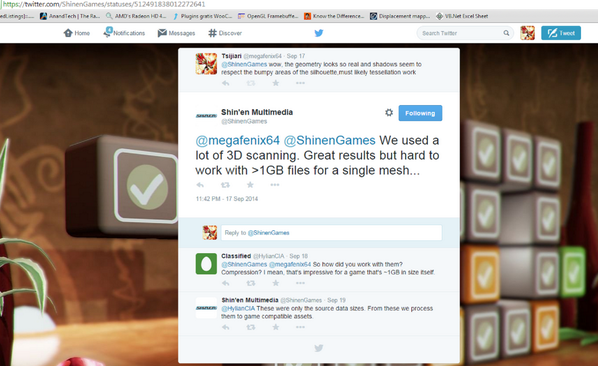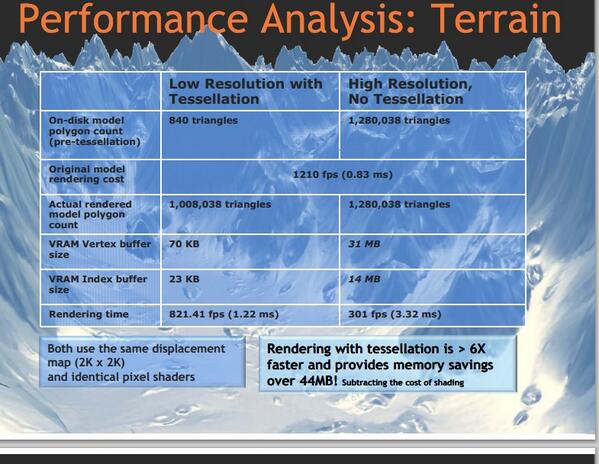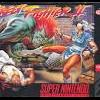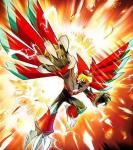Go check their twitter man, they answered you, and said its not tesselation, its 3d hdri scans used for ibl.
actually they neither denied it nor directly confirmed it, although 3d scanning gives pretty large assets that would be impossible to fit in ram even with BC1 texture compression(assets of >1GB per mesh are way to big for the wii u ram even with 6x texture compression), and since they say they transform those files into compatible assets its very possible that they used tesselation with dispalcement maps to reduce the memory storage of the original assets, after all they wouldnt be the fiorst ones in taking this approach, and reading thier response again the answer could be taken as a complement to what i mentioned

here is an exmaple of how to use tesselation with 3d scans
Here is an example application of STL
https://www.solidcon...nning-services/
"
Solid Concepts Inc. Now Offers 3D Scanning Services
Solid Concepts’ 3D scanning technology is known as laser triangulation scanning. Directed light reflects back from the object scanned to record the object as millions of polygonal triangles, or a fine mesh. The scanner records the polygonal triangles to comprise a full three dimensional object, which is then translated into an STL file ready for immediate replication with 3D printing. While many designers model their 3D designs from scratch using special (and often expensive) 3D CAD programs, when replicating a part that is already in existence it is exponentially more helpful to begin with a scanned object to eliminate unnecessary time modeling an object from the ground up.
3D printing begins with an STL file. STL – Standard Tessellation Language – files are the industry standard for rapid prototype or 3D Printing. STL files record and save information from 3D CAD data as hundreds of polygons, or facets, defined by vectors and vertices. These polygons instruct 3D Printers during the additive layer manufacturing process. Solid Concepts provides scanned objects with tolerance integrity ready for replication.
"
here are some definitions
http://www.3dscanco....ng/glossary.cfm
"
- 3D Scanner - 3D scanners come in many forms, but the purpose of every one of them is to capture the shape, and sometimes color, of real-world physical objects or environments. This captured data is typically stored as a list of xyz-coordinates in a point cloud file. 3D scanners can be categorized as contact (CMM arms) or non-contact (white light, 3D laser scanners, or stereo-vision based). Some can even capture internal features. "3D scanner" is sometimes mispelled as "3D scaner".
- 3D Scanning - 3D scanning is the fast and accurate process of using a 3D scanner to capture and convert physical objects into digital 3D data.

- CAD - Computer Aided Design. CAD is a standard term defining a group of software that aides in design. CAD software is what is used for 3D modeling and to create 2D drawings. It is typically used in manufacturing or other engineering disciplines. For example: An engineer designs in SolidWorks, Pro-E, AutoCAD, CATIA, or Unigraphics; all of which are CAD or CAE programs. Often confused with CAE.
- Tessellation - Generally refers to filling a surface plane or surface with shapes that create no gaps or holes. In 3D scanning, this concept applies to wrapping a mesh around a CAD body. A jigsaw puzzle is a great real world example of a collection of tessellated shapes.
- STL - Standard Tessellation Language. STL is a special internationally recognized file format that stores XYZ coordinate measurements and their normals. Gives the added functionality beyond XYZ coordinates enabling visualization of a part's "front" and "back." STL is the standard file format for rapid prototyping, and is used in reverse engineering. See Organized STL and Unorganized STL.
"
here is an example of how much you can save up memory with tesselation+dispalcement

Edited by megafenix, 25 October 2014 - 09:12 AM.


















